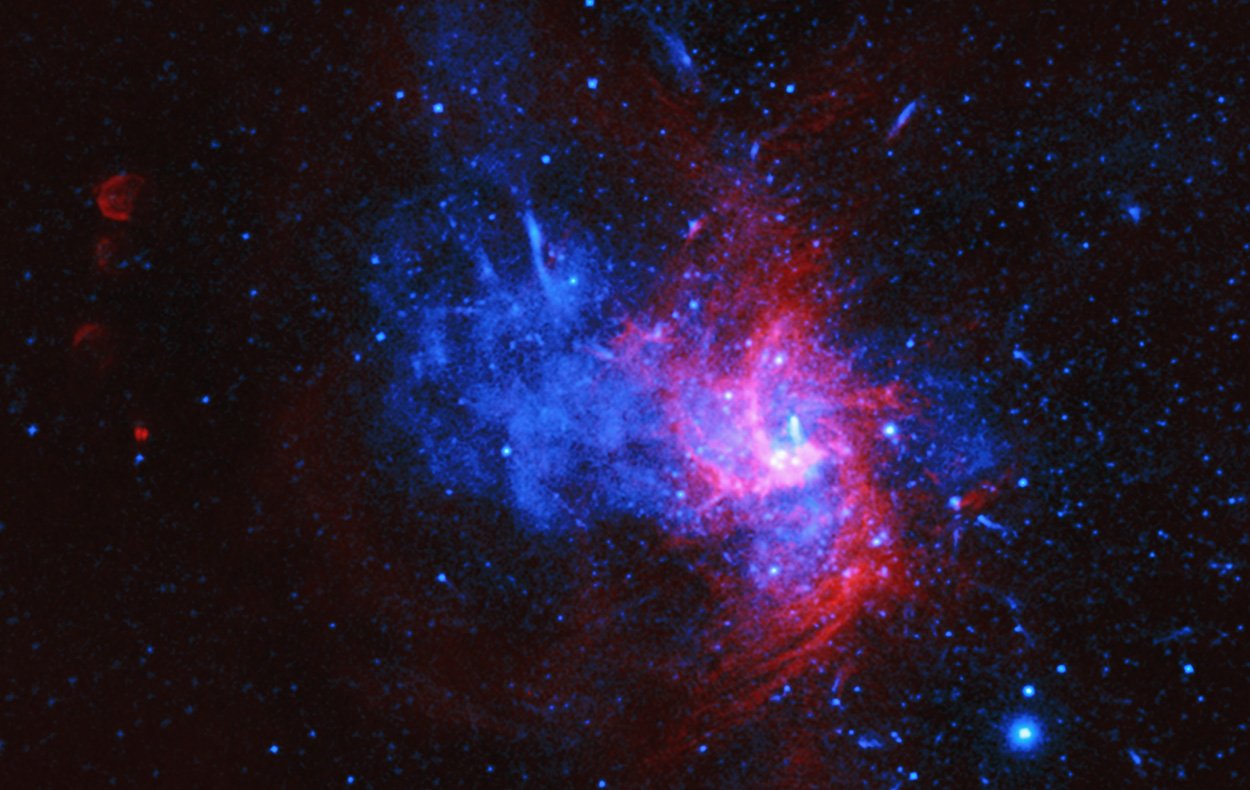In our galaxy, astronomers know about 350 supernova artifacts – the glowing remnants of a exploding star. But none of them came from a rare special case, called Supernova Typ1ax – yet. In the heart of the Milky Way, researchers have now tracked down the first remnants of a very slow explosion of a white dwarf in our galaxy. Since the remnants of this supernova, known as Sagittarius A East, is only about 25,000 light-years away, it opens up entirely new opportunities to reach the bottom of this previously undiscovered type of starburst.
A “normal” supernova occurs when a massive star reaches the end of its life cycle. Then its nuclear fusion subsides and a gravitational collapse occurs, as the star actually collapses. But there are also supernovae where the starting star has become a white dwarf – the very compact remnant of a star that shed a large chunk of its shell. When this white dwarf orbits in a binary star system, it often happens that it absorbs material from its stellar companion. If its mass exceeds a critical limit, a type 1a supernova occurs. Because these stellar explosions display a brightness that can be uniform, they are often used as “standard candles” in astronomy – they can be used to measure the distance of distant galaxies and thus also the extent of the universe.
X-ray view of the heart of the Milky Way
But despite the importance of type 1a supernovae to astronomy, the sequence of these eruptions has only been partially explained. This is especially true for a subspecies of these stellar explosions, the type 1ax supernova. Astrophysicists suggest that thermonuclear reactions in white dwarf explosions are slower, resulting in less heavy elements. In addition, white dwarf remnants can still be conserved in these supernovae. According to theoretical calculations, there are about three 1ax explosions for every ten normal type 1a bursts. However, astronomers have not yet had an opportunity to investigate the events of this rare type of supernova: “The origin of these stellar explosions is highly controversial, also because knowledge about this type comes from states outside the galaxy alone,” explains Ping Chu From the University of Amsterdam and colleagues. Of the 290 to 380 known supernova remnants in the Milky Way, not a single type 1ax supernova has ever come from.
This has now changed. Because Zou and his team have now discovered that something in the core of the Milky Way that has been baffling for a long time could be the remnants of such a type 1ax supernova. It orbits Sagittarius A East (Sgr A East), a luminous structure made of dust and gas, very close to the central black hole of our galaxy. So it is only about 25,000 light years away from us. To determine the process by which these relics were created, astronomers have now examined them more closely with the Chandra X-ray Telescope. Using X-ray spectroscopy, they were able to determine how gases were formed and how fast they were moving.
The first representative within the galaxy of a type 1ax supernova
The spectroscopic images and data revealed that the initial composition of the supernova remnant differs significantly from those found in regular star explosions and also from common type 1a supernovae: “Our data shows a small percentage of medium-weight elements compared to iron and large proportions of manganese and nickel – these do not match Frequencies with models of nucleus collapse, supernovae and no normal type 1a supernovae, “the researchers report. “This pattern is surprisingly different from other supernova remnants.” With the help of astrophysical models, astronomers then examined the type of explosion that likely produced this initial pattern.
Result: It is very likely that Sagittarius A East was a rare remnant – a type 1ax supernova. “Sgr A East is the first remnant of a galactic supernova, possibly of type 1ax,” Zou and colleagues wrote. If confirmed, it would be the first close representative of these largely mysterious stellar explosions. Thus A East could make a crucial contribution to unlocking the secrets of type 1ax supernovae. “This finding is important in order to get a better understanding of the different ways white dwarves can be detonated,” Zhu explains.
Quelle: Ping Zhou (University of Amsterdam) et al., The The Astrophysical Journal; arXiv: 2006.15049v2

“Alcohol buff. Troublemaker. Introvert. Student. Social media lover. Web ninja. Bacon fan. Reader.”





More Stories
Huge radiation explosion from a magnetar – forschung.de
Principles and features of the folk nutritional principle
Science: The percentage of women in mint topics rises to a third